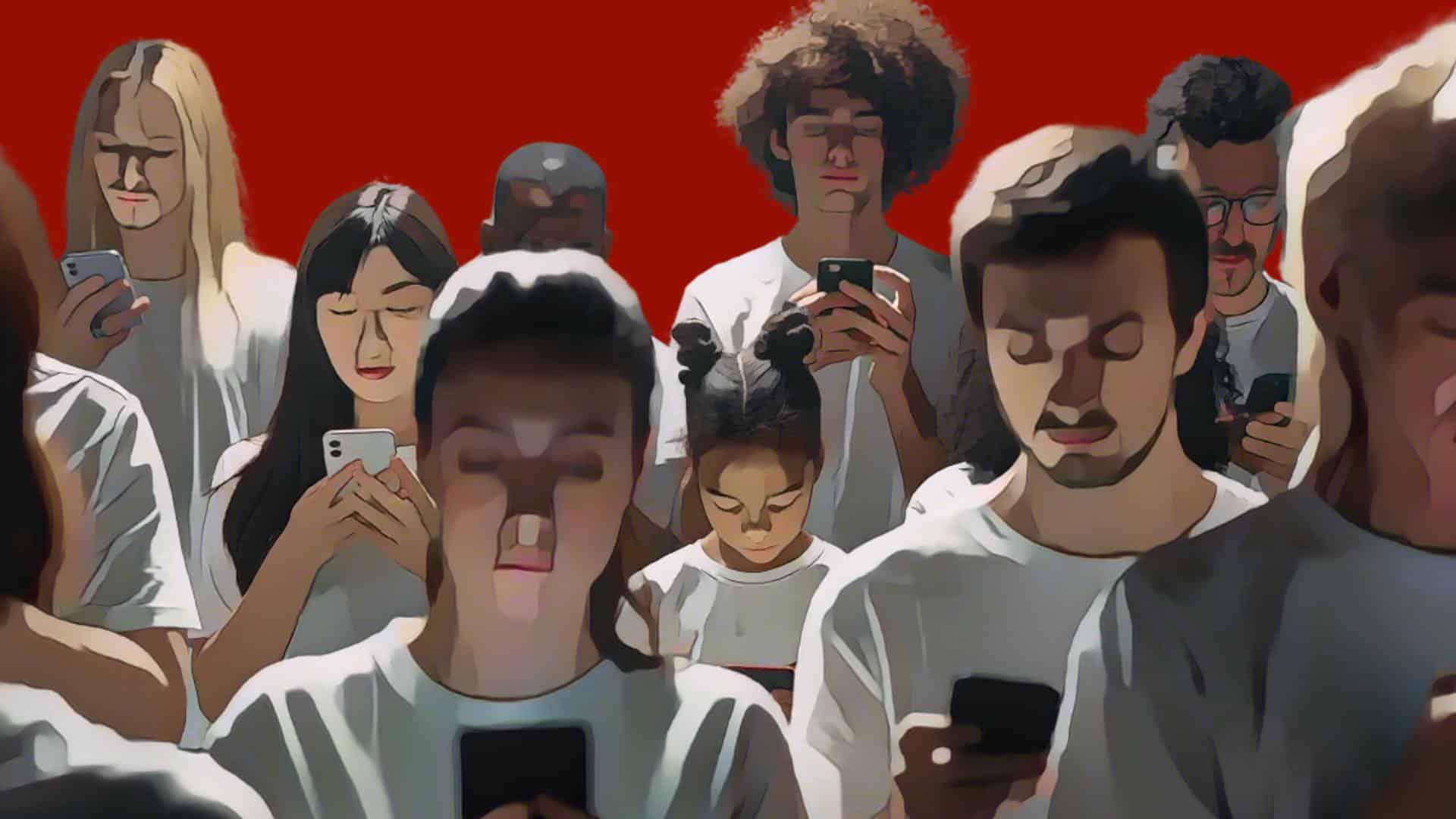Audiences are spread far and wide and get their information from all kinds of sources. How can your story catch their eyes and ears?

Young people access information, news and social media using their phones. (Illustration by News Decoder)
In News Decoder’s Top Tips, we share advice for young people from experts in journalism, media literacy and education. In this week’s Top Tip, News Decoder correspondent Norma Hilton tells us how to think about ways you will present your story even before you start reporting it.
You can find more of our learning resources here. And learn how you can incorporate our resources and services into your classroom or educational program or by forming a News Decoder Club in your school.
With all the information online, how do you make sure that you are heard?
Audiences these days are scattered across platforms and the competition for their attention is high. If you want to make sure people can find your story, you must think about how to make that happen.
That’s the advice from News Decoder correspondent Norma Hilton, an independent investigative journalist who has been published in the Toronto Star in Canada, the Mississippi Center for Investigative Reporting in the United States and the Special Broadcasting Service in Australia.
Hilton said that journalists nowadays are often seen as no different to content creators even though they sometimes they are the last line of defense between democracy and authoritarianism.
“They’re often competing with cat videos for the attention of people on the internet,” Hilton said.
Be a cross-platform storyteller.
To compete effectively, journalists need to produce content across platforms. A story designed for a newspaper isn’t enough these days. Stories must be told in different media forms, from text to photographs to videos.
“The more versatile a journalist is, the better they will be to adapting to a changing media landscape,” Hilton said.
This article was adapted from a video interview with Norma Hilton produced as part of News Decoder’s partner project Mobile Stories. Mobile Stories is a publishing tool for young people. It provides guidance on how to create trustworthy news content while upholding journalist ethics.
Watch Norma Hilton’s full video here:
She said that to make a story stand out, think about how you plan to present it. Is there interesting data that you can present as an infographic? Can you capture video for social media?
But even as you imagine the cool ways you can present the story, don’t forget your role as a journalist.
Some ways to cross-platform your story:
1. Tell it through audio: Some people get their information mostly through podcasts. Can you turn an interview you do into a podcast interview?
2. Tell it through images: Think about the different ways photos can be displayed through social media. Can you turn any of your images into memes?
3. Tell it through video: When interviewing or visiting locations, take footage you can use later for Instagram stories or TikTok. Can you video an interview to put on YouTube?
In telling the story across different platforms, the important thing is to think about who you tell the story to. Imagine talking to them in person. You wouldn’t drone on with facts and data, you would get to what your story is really about.
The great thing is that in publishing across platforms through different types of media, you don’t need fancy equipment or fancy sound or video editing techniques.
Instead, the people who know how to do all that often go out of their way to make things look more raw, because raw looks more authentic and authentic is what many media consumers value.
You can even use an AI program to help you create images, but make sure you tell your audience that you did that. In telling true stories you don’t want to mislead or misinform.
But remember, Hilton said, that no matter how you choose to tell the story, don’t forget your role as a journalist.
“Regardless of the platform you publish on, you have to make sure that your information is truthful, accurate and concise,” Hilton said.
💡 More Tips Like This
This story is part of News Decoder’s open access learning resources.
Whether you’re a secondary student, studying at university or simply interested in learning new things, we can help you build your journalism skills and better understand big global issues.
If you are a student or a member of a News Decoder Club, check out our other learning resources.
If you are a teacher, check out our other classroom resources:
- News in the Classroom
- Educator’s Catalog of classroom exercises
And ask us about joining the News Decoder Club program.
